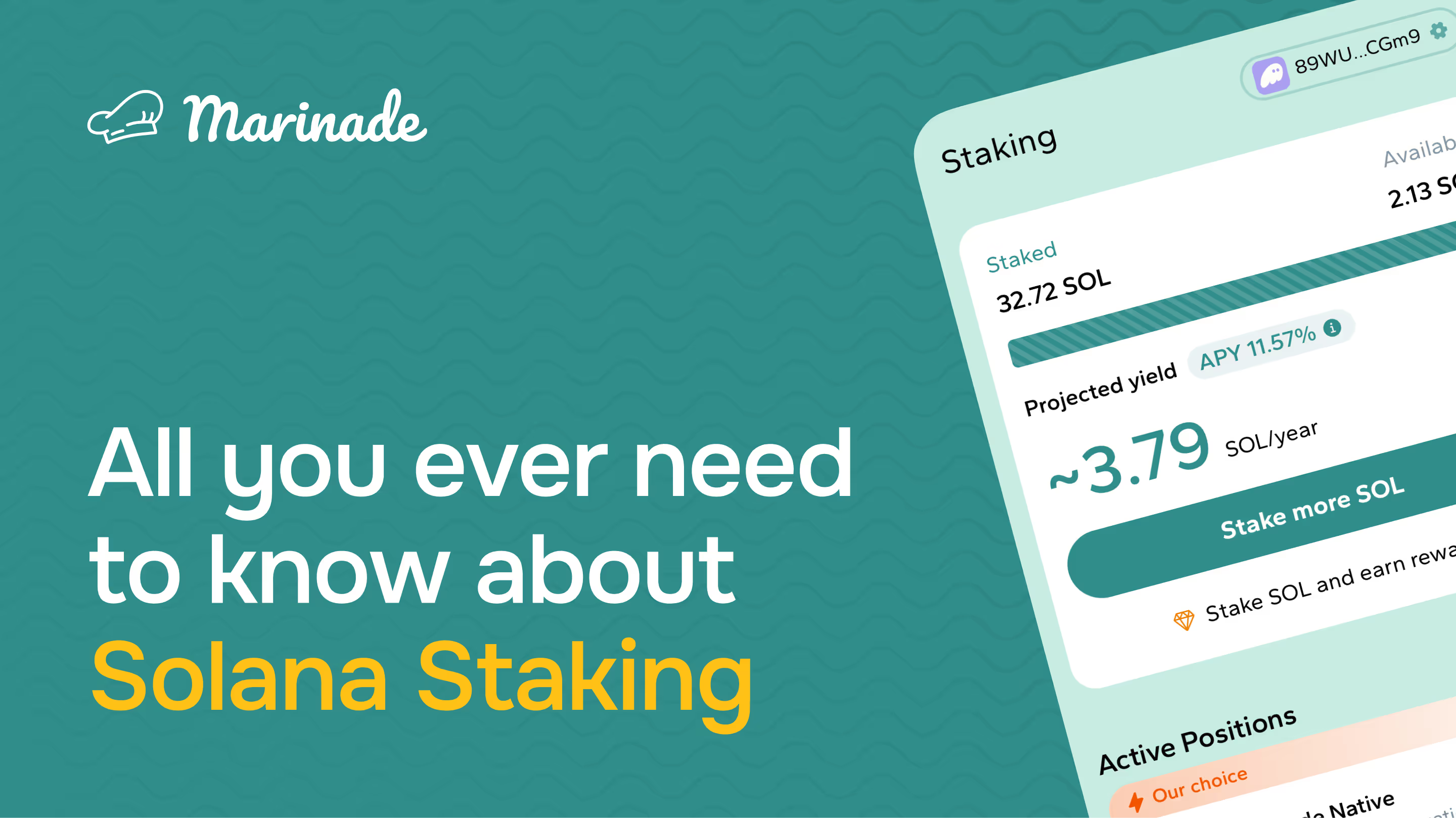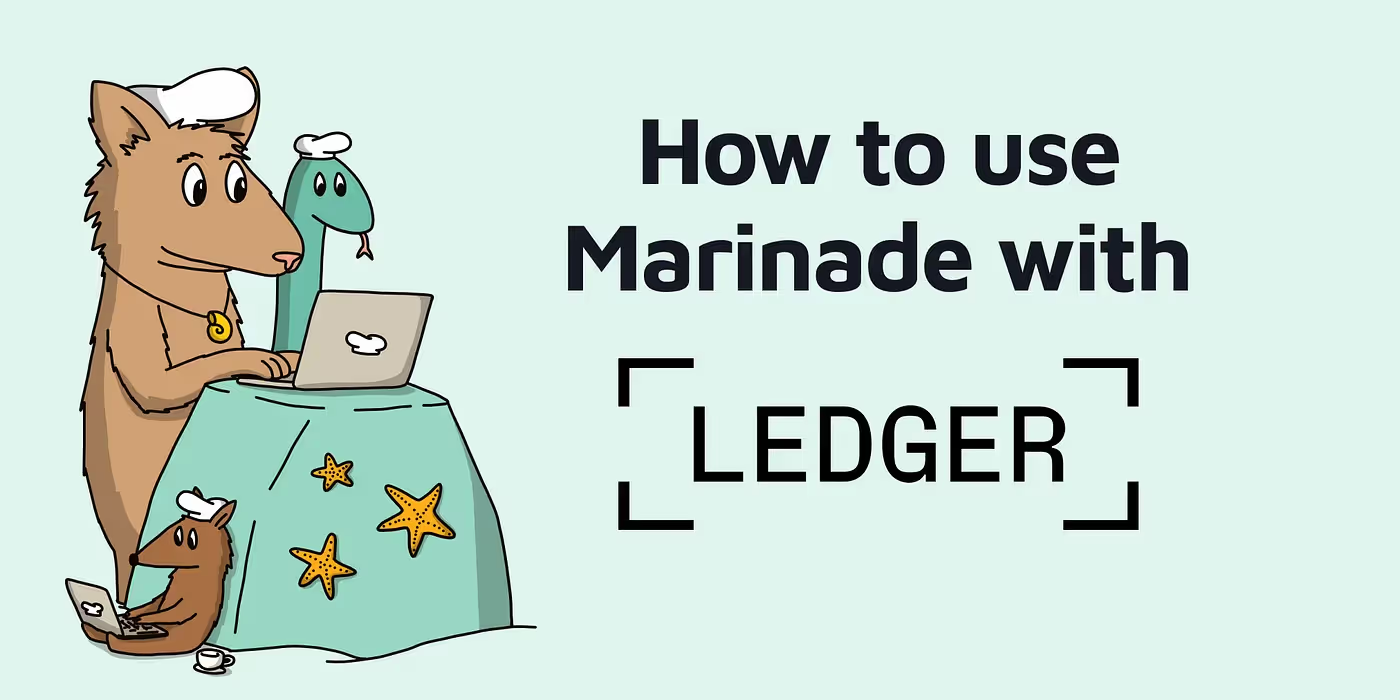How to use mSOL in Solana DeFi liquidity pools
You wonder how liquidity pools work or how to make them work to your advantage? Marinade created this article to explain in-depth everything you need to know.

The Solana DeFi ecosystem presents a growing number of creative ways to cook up attractive yields with your crypto assets.
In addition to staking mSOL and then lending it, another method to consider is to deposit mSOL in liquidity pools. This is a common strategy of “yield farming” or “liquidity mining.”
Using mSOL in liquidity pools has its unique characteristics because it naturally grows in price at about ~6% against the price of SOL. Liquidity pools are one of the most popular and potentially lucrative ways to use mSOL in DeFi. But there are risks associated with it and involves a learning curve to understand what is happening with your tokens when they are in an LP.
More recently, the introduction of Concentrated Liquidity Pools have presented more opportunity for gains, albeit one with additional risks with more knowledge required to take full advantage.
It’s easy to get confused by the services offered by yield farming DeFi platforms, especially if you’re just starting out. As with anything in crypto, it’s important that you have a solid understanding of how things work before deploying any funds.
How do you earn yields from liquidity pools?
A liquidity pool is a digital pile of crypto assets locked in smart contracts. Crypto holders deposit their funds to liquidity pools in order to provide decentralized exchanges with liquidity. These liquidity providers are compensated for it. The compensation could come from the DeFi platform’s underpinning charges such as the exchange/swap fees. Platforms will also offer other rewards as incentives. For example, Orca’s SOL/mSOL pool will pay fees to the provider in SOL and mSOL, but also additional rewards in ORCA and MNDE.

Liquidity providing usually requires a deposit of two tokens onto a DEX, for example mSOL-USDC or mSOL-SOL. This is because you will be providing liquidity for a specific pair. The USD value of the deposit always needs to be split between the two tokens to ensure equal value on each side. This is where impermanent loss comes into play, which we’ll cover shortly.
Understanding Annual Percentage Yield (APY)
Annual percentage yield (APY) is the rate of return you earn on an investment over a year with compounding interest. This means that as you earn a token, that token is reinvested and added to the principal amount.
APY should not be confused with annual percentage rate (APR), which simply pays interest without compounding it. With APR, your earnings will increase over time in linear fashion because you will earn the same amount every day. You’ll only achieve the promoted APY as a function of time and how long you let your money compound.
Liquidity pools are known to offer very high APYs which are attractive and can be a lucrative investment. However in DeFi, the value of APY changes widely based on different factors and can change quickly. In most cases, the promoted APY is for a limited period of time due to the market volatility.
It’s important to see through the factors that influence APY in order to evaluate the actual yields for your investment.
How are Liquidity Pool APYs determined?
The basic concept is that the rates are calculated algorithmically based on real-time supply and demand of the tokens and then projected over a year to produce the annual rate that is shown.
The exact APY formulas vary between different DeFi platforms but generally follows this formula:
APY = Rewards / Liquidity Pool TVL
Based on this formula, there are 3 main things to look out for when investing in liquidity pools.
Since incentives are paid out based on the number of tokens regardless of the token’s price, the actual value of yields can swing wildly. Any fluctuation in the price of your incentive token will affect your total earnings.
To limit this risk, consider the quality of the protocol and reward token. Will people continue using the DeFi platform so that you continue to gain trading fees? Do the tokenomics make sense and does the token have utility? | Learn more about MNDE token utility
Liquidity Providing: What is Impermanent Loss?
Price divergence occurs when the prices of the paired tokens in the pool shift in opposite directions. This results in what is known as Impermanent Loss, a change in how many coins you have pooled due to price action, which can affect your actual yield.
When you deposit in a liquidity pool, the number of tokens on each side of the pair can either go up or down when the token prices increase or decrease at different rates.
mSOL-stablecoin pairs often have very high APY. Let’s take a look at this example:

In short, when the price ratios move away from the original ratio at the time that you put in liquidity, the liquidity pools will decrease the number of your tokens that have appreciated in value. The greater the price divergence, the greater the impact of this loss to your yields.
Another popular pool is mSOL-SOL. Even though mSOL appreciates at a gradual rate against SOL, it will still have a very small amount of divergence loss, which would in all likelihood be made up and then some by protocol fees and rewards.

To assess the risk profile of liquidity pools, an Impermanent Loss Calculator such as this one by Cogent Crypto might come in handy to estimate the impermanent loss in evenly weighted liquidity pools based on hypothetical scenarios.
Supplying SOL liquidity to Marinade
Here’s another alternative that doesn’t have any impermanent loss risk: Supply SOL liquidity to Marinade’s unstaking pool. Here’s how it works.
Marinade keeps a sizable pool of SOL available at all times (currently around 400k SOL) to serve mSOL unstakers. Users supply SOL to create a SOL-mSOL LP token and earn a share of fees. While the APY in this strategy is only around +3%, Marinade also offers MNDE mining of this LP, so you can deposit to earn another ~7% in rewards of MNDE. Because you are only submitting SOL tokens to the LP, there is no impermanent loss risk, though when you claim your LP tokens, you may receive some mSOL tokens in addition to SOL based on the pool’s balance.
Visit the Marinade DeFi page and click on “Marinade Staking” to see current APYs and provide SOL liquidity.

Concentrated Liquidity Pools: Higher Risk, Higher Reward
The next generation of liquidity pools offer even higher yields and are even more capital efficient: Concentrated Liquidity Pools.
On Solana, Orca has already deprecated their original pools and moved into concentrated liquidity pools with the introduction of Whirlpools, another notable provider on Solana is Lifinity, and Kamino Finance recently launched automated liquidity strategies.
How does a concentrated liquidity pool work? Think “leverage” but for pools instead of trading.
The user sets the price range of the assets within which to provide liquidity. When the current price of the asset is within the selected price-range, you’ll earn trading fees and any associated incentives.
If the price of the pair moves outside the range, aside from the fact that your position will be dormant — no incentive or trading fees will be earned — you’ll also incur impermanent loss where your position will shift to consist entirely of one asset (the token of lesser value).
The more concentrated your liquidity is, the more your yield multiplies, but likewise your capital will be exposed to a comparably higher risk of divergence loss.
Concentrated liquidity is still a very new concept and there are already protocols on Solana beginning to explore the idea of concentrated liquidity with automated management of price ranges to reduce impermanent loss risk. While Orca enables concentrated liquidity deposits from any Solana user via its Whirlpools, the Lifinity market maker has chosen to provide a mix of user funds (including mSOL-USDC) and their own liquidity and direct revenues to its protocol token, or Flare stakers rather than allow anyone to come in and deposit concentrated liquidity directly.
An even riskier and more complicated method of providing liquidity is through leveraged yield farming. We’ll describe the opportunity and increased risks of this concept in a future post.
Conclusion: Should you invest in liquidity pools?
Liquidity providing often promises high returns but also requires investors to monitor market fluctuations, compare divergence loss with volume and protocol rewards, have a medium-to-high level of risk tolerance and requires more tokens than mSOL. The risk level is amplified with concentrated liquidity pools, but so is the capital efficiency and rewards.
The lowest-risk liquidity to provide would be two stablecoins (like USDC and USDH). Unless there was a depeg incident with either token, there would be no divergence. mSOL/SOL is another lower risk pool, because mSOL rises at an expected rate of about 5.71% APY vs. SOL.
Keep in mind these relatively safe pools are likely to have the lowest APY. Often times, a stablecoin pair with SOL or BTC will have a much higher APY, but that is because impermanent loss is practically assured since only one asset is likely to move in price.
If you don’t want to actively manage a LP position, you may be better off using another strategy to earn more rewards with mSOL. Visit the The Cookbook or come chat in the Marinade Discord’s mSOL-Strategies channel to discuss strategies with other mSOL DeFi enthusiasts!


